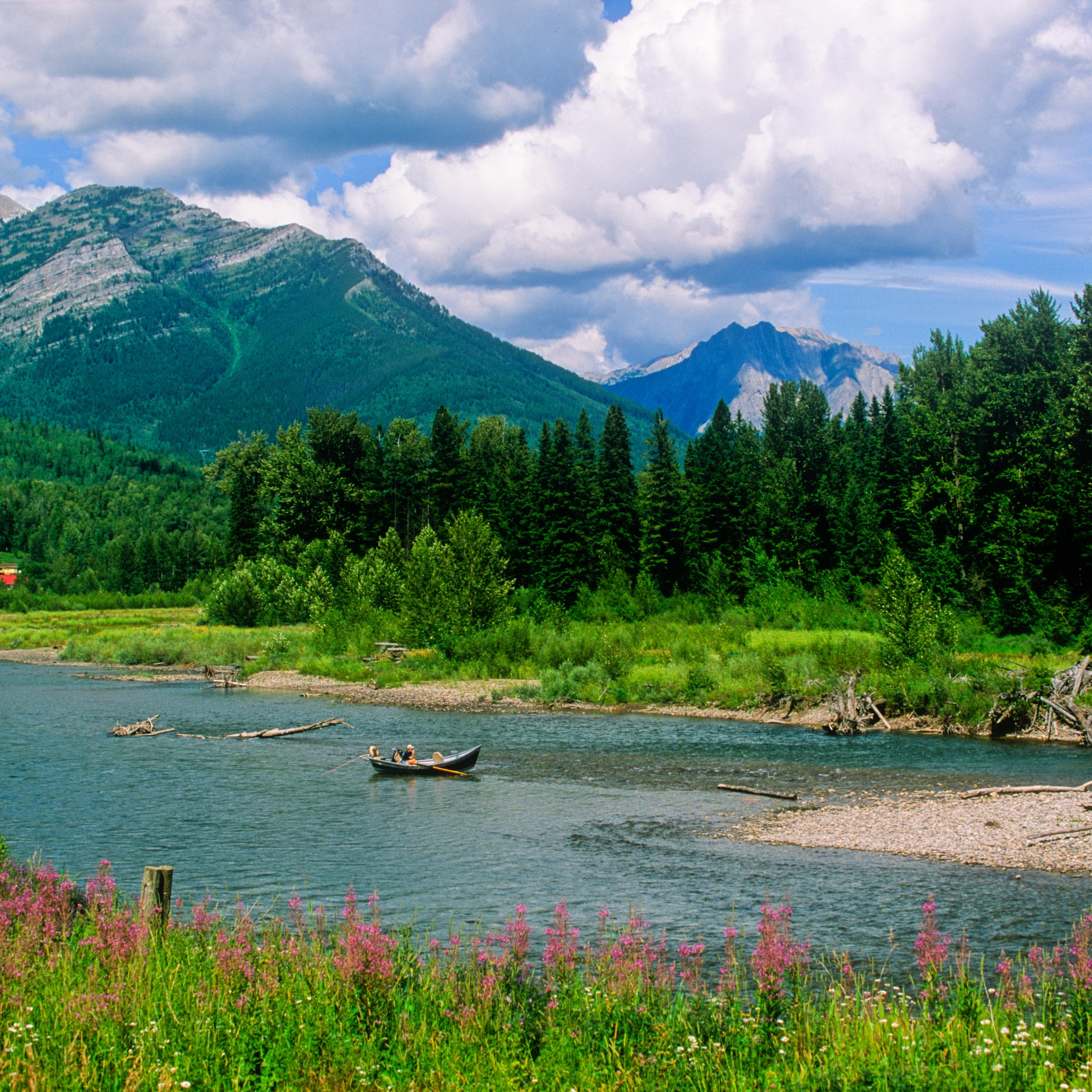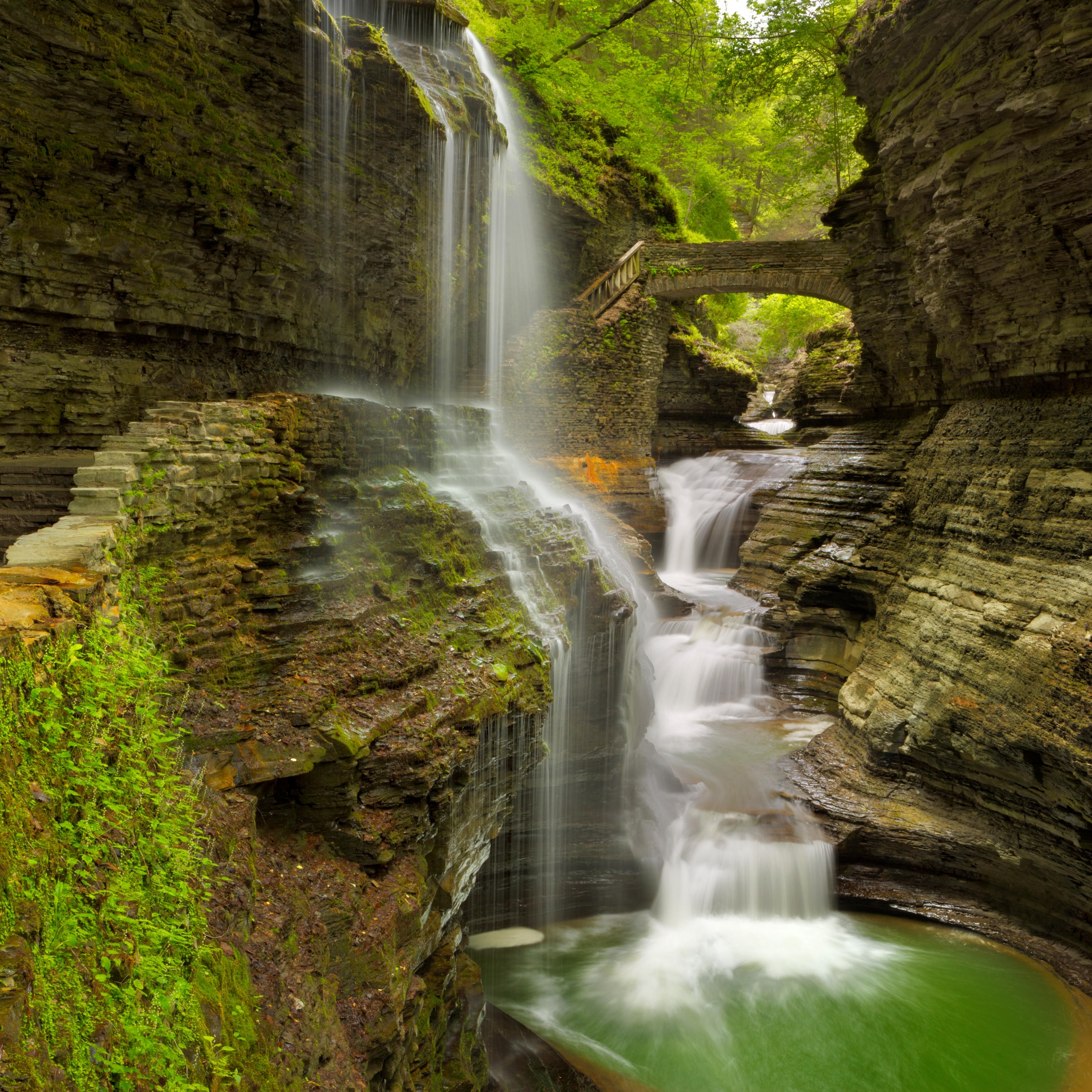Sleep, Wonderful Sleep
Real Travel
From the September 2009 issue of National Geographic Traveler
Liberation from daily life can turn on-the-road slumber into a profound experience.
The hottest hours in Alter do Chão, a Brazilian town in the Amazon region, are after lunch. The dogs disappear, the shops shutter. Every now and again a humid breeze stirs the palms overhead, which rustle like dry silk. Suspended in midair I sigh, stretch, adjust position in my hammock. As I swing this cotton cocoon into a gentle rhythm, my mind begins to hum a line from an Amazon poem: "Everything important happens in a hammock." I don't know who wrote it, but I wish I did. That poet understands perfectly why I will travel thousands of miles just to take a nap.
Sleeping is one of my deepest travel pleasures, but I don't talk about it very much because I feel a little guilty. When friends share details of their intricately planned trips, in which every second of precious travel time is pencilled in with activities, meals, museums, and mountain treks, I smile encouragingly and don't say much. What would they think if they knew that my own travel itineraries include yawningly empty slots for late afternoon naps under staccato Caribbean downpours and lazy mornings nestled between monogrammed Italian linens?
Better sleep is one of travel's happy side effects. When I visited Mexico's Yucatán coast in my early 20s, I was shocked by how many hours—more than 12—I spent sleeping most days. And I wasn't staying in a comfy, hermetically sealed resort; I paid $3 a night to hang a hammock with 20 other backpackers under a thatched roof in a group hostel. There were lots of fussy roosters in the neighboring lot, but it didn't matter. Far from home and from my own bed, surrounded by strange smells and sounds, I could plunge into a sleep that was more profound, dream-filled, and enjoyable than I imagined possible.
Liberated from alarm clocks and responsibilities, sleep flows more easily. But I don't think simple de-stressing explains why the quality and texture of travel sleep is so dramatically different. My theory is that sleep is actually an extension of our travels, not a pause or respite from them. When traveling, we open ourselves to novel sights, sounds, smells, and ways of being.New and unfamiliar stuff pours into us—cultures, music, landscapes, even ways of moving through space. It is when sleeping that we wade through this overwhelming river of stimuli. No wonder, then, that sleep becomes so much more intense when we are on the road.
Sleep is something else too: It's an experience that changes rhythm, sometimes dramatically, from place to place. People obsess about jet lag, but I suspect that the difficulties I experience recovering from long journeys have more to do with local and cultural adjustment than time zones. On the Caribbean island of Trinidad, for example, people awaken at the crack of dawn to get a jump on the heat, fall into torpor around 10 a.m., when the sun is high, then return to life with the cool evening breezes. Though Trinidad is just one hour ahead of New York, my home base, I still take days to acclimate to the island's different patterns of sleep and wakefulness.
When, at last, I do fall into the local sleep swing, I feel I have truly arrived, on a molecular level. I remember an afternoon in the Dominican capital, Santo Domingo, when I shared a bountiful midday meal with a group of new Dominican friends in a big apartment overlooking the blue Caribbean Sea. Servings of creamysancocho soup, habichuela beans, and rice were helped along by cups of sugary black coffee. Weighed down by food and heat, the conversation slowly sputtered, and finally stalled. One by one my friends abandoned the table to flop on nearby hammocks and sofas. I suddenly understood why my hosts had so many pillows and bolsters on the floor. I grabbed a couple for myself and followed my friends' example. I'd always known about the venerable Latin American custom of the siesta, but that day I experienced it. I shared not just sleep, but a slice of Dominican life.
Travel sleep has another wonderful attribute: It is sleep I remember. Separated by distance and culture from my normal sleep routine, I soon find that I luxuriate in the unexpected fragrances, textures, and sounds that fill my dormant consciousness in a new place. If a commitment to "slow travel" is what now distinguishes the aware modern traveler, well, what is slower than sleep? Maybe I should stop feeling sheepish about this predilection of mine and come clean to my ambitious friends, explaining to them that travel sleep is, after all, an activity too.
It certainly always has felt that way to me. Huddled under a puffy quilt on a tatami mat in a mountain inn on the north end of the Japanese island of Honshu, I notice the smell and crunchy feel of the buckwheat-husk pillow behind my neck, the sliver of moonlight that is seeping through a crack in the shoji screen. From another sleepy time, my mind begins to hum a refrain: "Everything important happens…on a futon." Then travel's deep sleep pulls me down, gently and deliciously, into the distant Japanese night.
Daisann McLane regularly sheds light on local ways on her blog,
Travel's ultimate thrill may be that one special discovery—and sharing it with kindred souls
So, where are we going for dinner tonight?" I ask. My friend Mariko smiles. "It's a little place. I hope you will like it." We jump into a Toyota taxi with spotless slipcovered seats. Mariko instructs the driver in Japanese, and we zoom off.
I kind of know my way around Tokyo. I can ride the subway without getting lost, and I can tell when I'm in Shinjuku or Asakusa. But not tonight. Two or three turns into a labyrinth of side streets, and I have no idea what neighborhood we are in. Or even if we are still in Tokyo.
"Stop here," Mariko says after a bit. We face a shadowy, empty-looking building illuminated by a dim blue light over the entry door.
Suddenly that door slides open, revealing a warmly lit wood-paneled eatery. A woman in a perfectly wrapped kimono appears, bows, and motions us inside. As we settle ourselves, I notice there are no tables, only a bar. A very, very small bar. I count the seats: One, two, three, four.
That's when I realize what is up. Mariko, a new friend I've made through a mutual acquaintance, is honoring this occasion of our first meeting by presenting me with something special. Something that, as ardent travelers, we both can understand and appreciate, even though we come from very different parts of the world. What Mariko is offering me is the greatest travel gift of all: a secret place.
I've collected secret places since I could crawl—the cabinet under the bathroom sink, the quiet space beneath my bed. Of course my standard for specialness has become a little more sophisticated over the decades; what hasn't changed is the urge to discover marvelous and mysterious nooks around the world that somehow will "belong" to me, finds that I come across spontaneously or after a long and concerted quest.
Most travelers I know share this passion in some form. My friend Laura, for instance, keeps a stack of worn Moleskine books filled with scribbled notes: the address of the tiny café in Budapest where she tasted the ultimate walnut-cream pastry; the telephone number of the unlisted guesthouse in Cartagena, Colombia, where she fell asleep every night to the rolling murmur of the Caribbean sea.
I'm not much of a diarist, so I tend to keep my secret places in my head. To jog my memory, I hold onto pieces of travel ephemera: maps of Ljubljana, menus from restaurants in Shanghai, business cards, café con leche-stained paper napkins that I saved from out-of-the-way Buenos Aires confiterias.
In a world where everyone can—and does—blog about their favorite obscure noodle stall in Macau, collecting secret places may feel sometimes as obsolete as steamship travel. And yet I continue to make discoveries of places unknown to tourists, guidebook writers, and bloggers, and sometimes even to the people who live in the place I'm exploring. The reason: My definition for a "secret place" has an important qualifier. To get a spot on my list a secret place has to be special—to me.
- National Geographic Expeditions
Ko Samui, in Thailand, is a beach resort that is filled with tourists year-round; the Buddhist temple near the center of town is marked on every map. Yet it became my secret place early one morning when I wandered in and noticed, off to the side of the main altar, a device that looked like a pinball machine. Its main feature was an electrically illuminated statue of Buddha inside the glass case.
I stood in wonder before this pinball Buddha, then noticed a coin slot that read "10 Baht." I had some Thai change in my pocket, so I dropped a 10-baht coin in the slot. Instantly the Buddha's eyes began flashing red, blue, and green as a recorded voice thundered forth in rapid-fire Thai. Then, in a frenzy of flashing, whizzing, and whirring, the machine spit out a piece of paper: my fortune.
What did it say? That remains secret (even to me—most of the text is in Thai). But the next time any friends of mine go to Ko Samui they will certainly be carrying directions to my special pinball Buddha, along with operating instructions. Once you've found that secret place and added it to your collection, there is only one thing you can do to make the experience of it even better: Share it with special friends.
Tokyo is practically ground zero for secret places. There seems to be something about Japanese culture that maintains, even safeguards, a reverence for the hidden, for the spontaneous discovery. At Mariko's secret restaurant, we—along with the lucky patrons in those other two seats—eat one of the best meals I have ever had: course after course of the freshest fish, followed by servings of exquisitely shaped and perfectly steamed vegetables that I'd never heard of. The chef personally presents and explains each dish to Mariko, his regular customer.
Full of heady sake and delight, I ask Mariko if the restaurant has a business card, so I will be able to find it again some day. She laughs.
"It doesn't even have a name."
This secret place, I realize, "belongs" to her. Her traveler's gift is not the place itself, but the sharing of it with me, a like-minded new friend.







